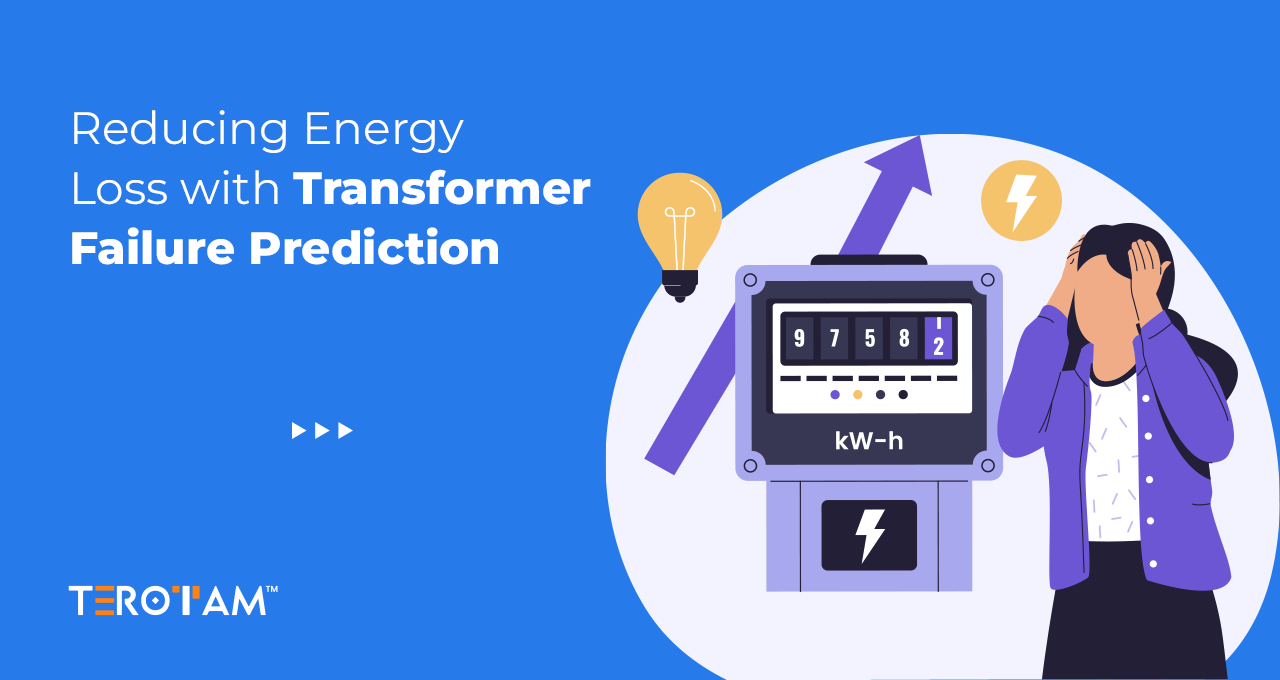Maintenance is the lifeblood of any restaurant operation. It ensures that your kitchen equipment, the backbone of your culinary endeavors, functions smoothly, avoiding costly breakdowns and guaranteeing a seamless dining experience for your customers. But how do you stay on top of maintenance in a bustling restaurant environment? The answer lies in a well-structured Restaurant Preventive Maintenance Checklist.
In this comprehensive guide, we’ll explore why restaurants need preventive maintenance, what a restaurant preventive maintenance checklist is, its importance, and how to create and use one effectively.
Let’s start understanding why restaurants need a preventive maintenance checklist.
Why Do Restaurants Need Preventive Maintenance?
Running a restaurant is a complex operation, and your kitchen equipment takes a constant beating. From stoves and ovens to refrigerators and dishwashers, these machines are the unsung heroes of your establishment. Neglecting their maintenance can lead to a host of problems, including:
- Costly Breakdowns: Emergency repairs can be expensive and disrupt service.
- Health and Safety: Neglected equipment can lead to foodborne illnesses and safety hazards.
- Loss of Reputation: Consistently malfunctioning equipment can tarnish your restaurant’s image.
- Energy Efficiency: Well-maintained equipment consumes less energy, reducing utility bills.
What is a Restaurant Preventive Maintenance Checklist?
Now that we understand the need for preventive maintenance let’s go further into what exactly a Restaurant Preventive Maintenance Checklist is and how it functions.
A Restaurant Preventive Maintenance (PM) Checklist is a structured and organized document catalogs all the equipment within your commercial kitchen, requiring routine inspection, servicing, and maintenance. Think of it as your kitchen’s maintenance roadmap—a centralized tool that keeps you on track, ensuring that all vital maintenance tasks are completed as scheduled.
The Key Components of a Restaurant PM Checklist include:
Equipment Identification:
Each piece of equipment in your commercial kitchen is listed, from ovens and refrigerators to dishwashers and ventilation systems. This comprehensive inventory ensures that no essential item is overlooked.
Maintenance Tasks:
For each piece of equipment, the checklist specifies the maintenance tasks that need to be performed. These tasks may include cleaning, lubrication, inspection, calibration, and more, depending on the equipment’s nature and requirements.
Frequency:
The checklist indicates how often each maintenance task should be carried out. Frequencies can vary from daily tasks like cleaning to monthly or quarterly tasks such as inspection or filter replacement.
Responsible Parties:
To ensure accountability, responsible parties are assigned to each maintenance task. This could be kitchen staff, maintenance teams, specialized technicians, or a combination thereof.
The Restaurant Preventive Maintenance Checklist serves as a comprehensive reference guide for your maintenance team. It helps them understand what needs to be done, when, and by whom. It also aids in documenting completed tasks, tracking equipment history, and complying with regulatory requirements.
How to Prepare a Preventive Maintenance Checklist for Restaurant Commercial Kitchens?
Creating an effective Preventive Maintenance (PM) Checklist for your restaurant’s commercial kitchen involves several key steps. Let’s delve into these steps in more detail to help you create a comprehensive and actionable checklist:
Here are a few Quick Steps to Prepare Restaurant PM Checklist.
1. Identify Equipment or Items or Area
Begin by conducting a thorough inventory of all the equipment or items in your commercial kitchen or other areas. This includes ovens, refrigerators, freezers, dishwashers, grills, fryers, exhaust hoods, and any other appliances specific to your culinary operation and other items that are included in your restaurant assets that contribute in aesthetics and service & safety. Ensure that you don’t overlook any critical items.
2. Determine Maintenance Intervals
Research and gather manufacturer recommendations and industry best practices for each piece of equipment. Maintenance intervals can vary widely, from daily tasks like cleaning to less frequent inspections or calibrations. Establishing these intervals is crucial for effective preventive maintenance.
3. Assign Responsibility
Clearly designate team members responsible for each piece of equipment. This ensures that there is accountability for the maintenance tasks associated with each item. Maintenance responsibilities can be divided among kitchen staff, specialized maintenance teams, or external technicians, depending on the complexity of the task.
4. Gather Documentation
Collect all relevant documentation, including equipment manuals, service records, and any specific maintenance guidelines provided by manufacturers. These resources will serve as references for your maintenance team when they perform tasks.
5. Create the Checklist
Organize your checklist with a clear format, including columns for equipment identification, maintenance tasks, frequency, and responsible parties. Normally, you must have 3 types of checklist that are Daily, Weekly and Monthly to keep everything streamlined and best of their condition.
6. Set Up a Schedule
Implement a scheduling system to track maintenance due dates and completed tasks. This could be a digital calendar, maintenance management software, or a physical planner. Regularly update the schedule to reflect completed tasks and upcoming maintenance requirements in your restaurant maintenance management software.
7. Provide Thorough Training
Ensure your maintenance team is adequately trained to perform the required tasks correctly and safely. Training should cover equipment-specific maintenance procedures, safety protocols, and the use of any specialized tools or equipment.
When you rigorously understand and follow these steps, you’ll create a robust and effective Preventive Maintenance tailored to your restaurant’s commercial kitchen. This checklist will serve as a valuable tool for maintaining equipment, preventing breakdowns, and ensuring the smooth operation of your culinary enterprise.
What You Must Include on Your Maintenance Checklist for Restaurants?
A comprehensive restaurant maintenance checklist should cover various equipment and maintenance tasks. Here’s a closer look at what you should include:
Equipment Identification:
- Commercial Ovens
- Refrigerators and Freezers
- Dishwashers
- Grills and Griddles
- Deep Fryers
- Exhaust Hoods
- Ice Makers
- Food Processors
- Mixers
- Slicers
- Coffee Machines
- Ventilation Systems
- Heating and Cooling Systems (HVAC)
- Fire Suppression Systems
- Plumbing Fixtures
Maintenance Tasks:
- Cleaning (interior and exterior)
- Lubrication (where applicable)
- Inspection (for wear, damage, or leaks)
- Calibration (thermostats, timers, etc.)
- Filter Replacement (air, grease, water)
- Seal Inspection and Replacement (for refrigeration units)
- Drains and Pipe Cleaning
- Electrical System Inspection
- Gas Line Inspection (if applicable)
- Safety System Testing (e.g., fire suppression system)
- Exhaust Hood Cleaning
- Pest Control Measures
- Flooring and Surface Maintenance
Frequency:
- Daily
- Weekly
- Monthly
- Quarterly
- Semi-Annually
- Annually
Responsible Parties:
- Kitchen Staff
- Maintenance Team
- Specialized Technicians (e.g., HVAC, electrical)
- Pest Control Service
- Fire Safety Inspectors (for fire suppression systems)
Including a diverse range of equipment and tasks in your checklist ensures that no crucial maintenance activities are overlooked, and it helps maintain the longevity and efficiency of your restaurant’s commercial kitchen.
Restaurant Preventive Maintenance Checklist Templates
Here, just for a better understanding and approach we are adding a Daily, Weekly and Monthly checklist. Based on these, you can also create your own versions and also make the Quarterly, Bi-annually and Annual maintenance checklist customized for your restaurant and its maintenance requirements.
Here are the 3 Sample Templates for the Restaurant Maintenance Checklist
Daily Preventive Maintenance Checklist:
A daily checklist ensures food safety, maintains a clean and sanitized environment, and enhances the customer experience. It helps prevent foodborne illnesses, promotes safety through regular equipment and safety checks, and ensures a pleasant atmosphere.

Weekly Preventive Maintenance Checklist:
Weekly checklists support equipment longevity, aesthetic appeal, and pest prevention. They reduce repair costs by catching issues early, maintaining a welcoming atmosphere, and safeguarding against pest infestations, all while adhering to safety regulations.

Monthly Preventive Maintenance Checklist:
Monthly checklists optimize equipment efficiency, structural integrity, and customer comfort. They extend equipment lifespan and prevent costly breakdowns, ensure safety and compliance, and maintain a pleasing ambiance, ultimately saving on long-term costs.

Quick Tips for Making and Using Restaurant Maintenance Checklist
To ensure the effectiveness of your Restaurant Preventive Maintenance Checklist, consider the following quick tips:
Regular Updates: Your checklist should evolve with your kitchen’s needs. As you introduce new equipment or identify changing maintenance requirements, update the checklist accordingly.
Record Keeping: Maintain detailed records of all maintenance activities. Document when tasks are performed, any issues discovered, and any replacement parts used. These records provide valuable insights into the history and condition of your equipment.
Emergency Procedures: While preventive maintenance reduces the likelihood of emergencies, including emergency protocols in your checklist is essential. Specify what actions should be taken in the event of equipment failure to minimize downtime and safety risks.
Training and Awareness: Ensure your maintenance team is well-trained and aware of the checklist’s importance. Regular training sessions and reminders about the checklist’s role in the kitchen’s smooth operation can help maintain compliance.
Once you start following these tips and maintaining an up-to-date checklist, you’ll maximize the benefits of preventive maintenance, ensuring the longevity and efficiency of your restaurant’s commercial kitchen equipment.
Wrapping it up
A well-structured Restaurant Preventive Maintenance Checklist is an indispensable tool for ensuring your commercial kitchen’s efficient and safe operation. The checklist is a proactive guide, helping you avoid costly breakdowns, maintain food safety standards, preserve your restaurant’s reputation, and reduce energy consumption.
Creating a checklist involves identifying equipment, setting maintenance intervals, assigning responsibilities, gathering documentation, and establishing a schedule. It’s a dynamic document that evolves with your kitchen’s needs and helps you stay in compliance with health and safety regulations.
Remember that preventive maintenance is an investment in your restaurant’s long-term success. By consistently following your checklist and implementing best practices, you’ll safeguard your equipment, minimize downtime, and provide a top-notch dining experience for your valued customers. Start crafting your Restaurant Preventive Maintenance Checklist today to secure a prosperous future for your culinary establishment. Write to us at contact@terotam.com or schedule an appointment with our experts if you need assistance while performing on it.








